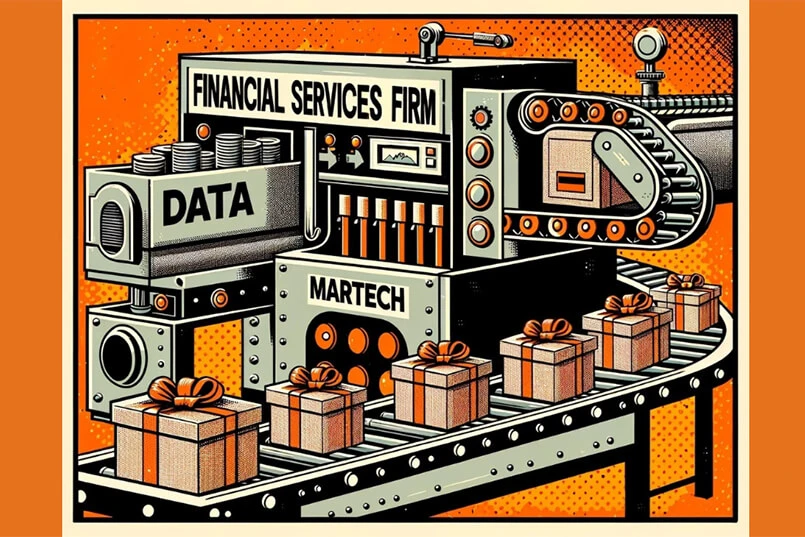With his third law, Isaac Newton told us that ‘for every action, there is an equal and opposite reaction’.
Much later, Edward A Murphy famously observed that ‘if there are two or more ways to do something and one of those results in a catastrophe, then someone will do it that way’.
In the world of client-agency relationships, both points can be helpful to remember.
Because almost everything a marketing or agency team does send a message of some sort, whether that message is intended or not.
These messages often produce second-order effects – the unintended consequences of marketer action or inaction on agency behaviour and client-agency relationships.
We uncover these all the time in our work on agency roster structuring, tender management or client-agency relationship assessment.
In the interest of raising awareness of what you might be saying to your agencies by default or by accident, here are some of the most common examples we’ve encountered recently.
Remuneration second-order effects
‘Follow the money’ advised William Goldman. And he’s kind of right – it’s certainly a good place to start.
Most marketers – and far too many procurement teams – try to drive performance by focusing solely on the easy-to-understand headlines of the remuneration agreement they reach with their agencies. They look at rate cards. They look at retainers. They look at production costs. But if you really want to understand how to sustain successful client-agency relationships, you need to follow all of the money, not just the easy bits. Because everyone else is following it too.
An all-you-eat retainer model might suit a marketer’s perceived need for rapid response and high agency service levels. But it might equally send a message across the marketing organisation that it’s okay to use up the agency’s time and resource in endless meetings or in testing strategy with creative work.
A base retainer with project fees might provide flexibility for the marketing team. But it also might discourage the agency from investing in specialist strategic or technical resources to help drive the marketer’s business.
A remuneration model where payment is based largely on results might lead to marketing transformation. But both sides would need to understand upfront the relationship dynamics such a model would encourage – conversations would be robust and disagreements would need to be worked through and openly managed. It’s not everyone’s preferred way of working.
Time and again we discover lead agencies losing money on staffing weekly work-in-progress meetings, convening workshops or producing competitive reviews that no one reads, all because that’s what the agencies were being paid to do. Yet all the while what the marketing teams wanted from the agency was lots more fast-turnaround, effective content at a sustainable cost. The agency is paid to do one thing but is actually required to do another.
Or a procurement team might negotiate hard on rates or agency retainer one year in the name of efficiency – rendering the current agency team unprofitable – but ‘balancing’ this with a small incentive scheme. Unless the incentive tabled is both significant and feasible, the message the agency gets from this model is to make the team as junior as possible, promote the members early (in title only), work them to death and rotate them out every nine months.
You see, money always sends a message, whether or not that message is intended. Not everyone acts on the message of course. But plenty do, so it’s important to know what the message is.
Letting the little things become the big things
Last year we were called in by a large, decentralised marketing team under some commercial pressure to provide an independent view of how to improve their lead agency relationship.
Among the many discoveries we made, we found that every marketing project given to the agency – large or small, strategic or tactical, long-term or short-term – was being given broadly the same level of focus and attention by the marketing team, with largely the same expectations of the agency in terms of delivery. This had been a long-standing feature of the team’s way of working. It’s certainly neither efficient nor effective, but it is common in our experience and something we normally address early in our engagement.
But when there was commercial pressure on the client-agency relationship, the unintended consequences of this sub-par way of working made themselves felt.
Every project was already equally urgent and important. But under commercial pressure each project – whatever its real significance – became a ‘final test’ of the lead agency’s overall suitability as a partner.
And while the agency was able to deliver abundantly on the 2-3 high-investment, strategically-driven projects time after time, it was not nearly as well set up (in resourcing, process or remuneration) to deliver rapid and cost-effective content 25-30 times a month.
Given the marketing team expectations were the same across the piece – regardless of real-world priority – the whole agency relationship was being placed on the line, repeatedly, for the sake of a few banners and some social media ideas.
When the process can drive culture
A particular way of working can appear to affect only those things close to it, and therefore we can tolerate it for a while and develop workarounds. But it is often the secondary effects that no-one notices that can quickly become the most dangerous and far-reaching.
We were engaged earlier this year by a marketing team asking what they could do to improve their agency’s creative delivery. As ever, we discovered plenty that could change on both sides. The marketers thought the problem was around the quality of briefs and the development of creative work. And in a way they were right.
But at the core, we found it was less about quality and much more about timing and rhythm.
Over the previous year, the marketing and agency teams had kicked off several big projects by working together on an intense process of strategy development and creative briefing, generating considerable momentum and excitement along the way. The agency – enthused and inspired – had soon after presented early creative thinking, only to have the entire process grind to a halt while the marketing team spent six weeks gaining feedback and input across a wide group of marketing and product stakeholders.
By the time the ideas were examined again and subjected to everyone’s comments and suggestions, nothing seemed new or exciting to anyone on the project team – neither marketer nor agency. But the team was duty-bound to continue with the process.
Unless expectations are rigorously managed, it’s hard to develop great work in an environment like this. New ideas are fragile – they can be easily kicked over. In this case, the agency team had been frustrated so often that they stopped believing the marketing team would ever approve anything good.
In other words, process – the way we do things around here – had heavily influenced team culture.
Look for the messages you didn’t know you’d sent.
So there they are – three examples of second-order effects influencing outcomes and behaviours in ways that were unintended and often not even spotted at first.
If things are going awry in your client-agency relationships (and at least something normally is) or you’re not understanding quite why the other team is behaving like it is, it’s usually well worth taking an objective look at all the messages you’re sending.
Whether you mean to send them or not.




